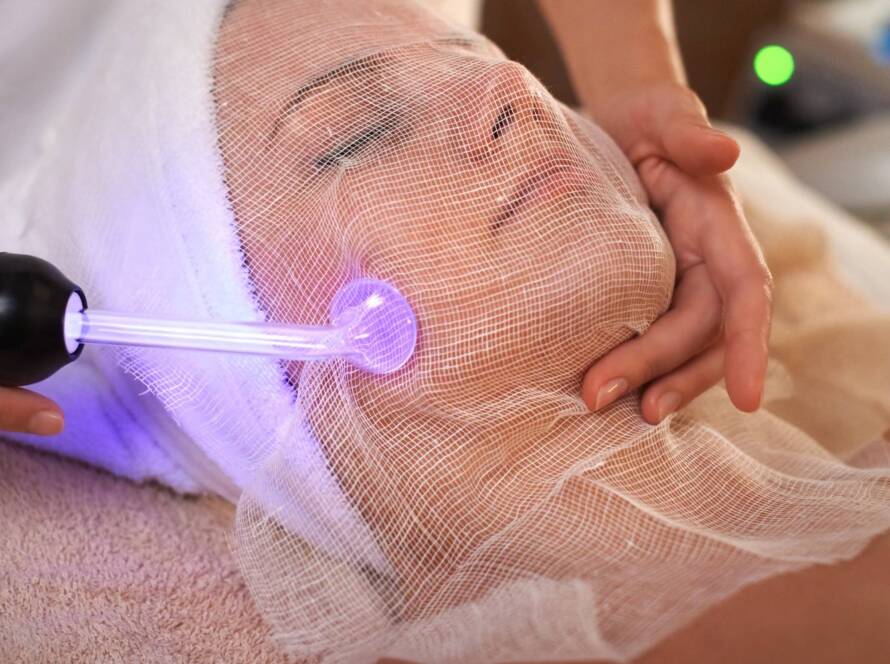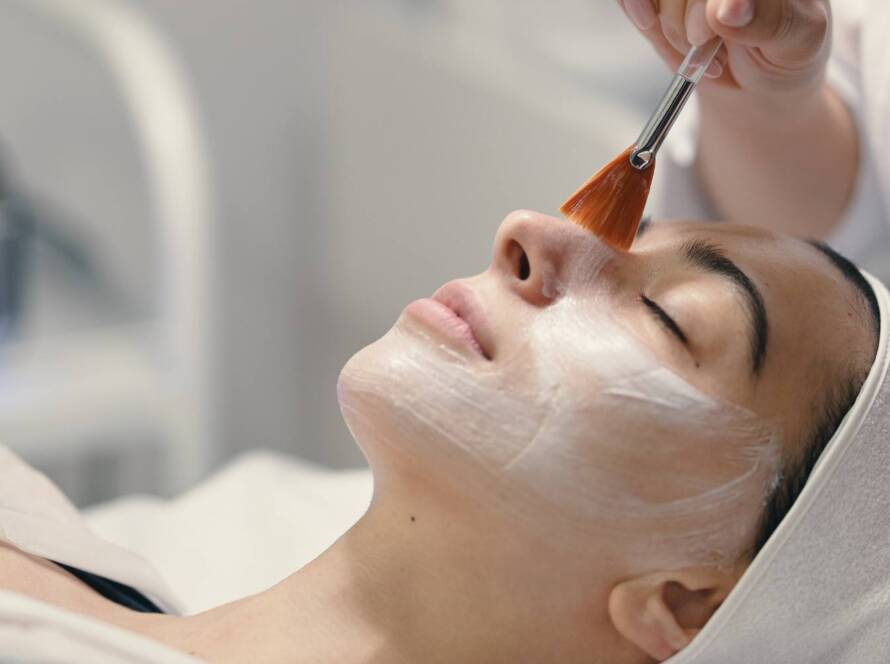Table of Contents
When you envision clear, smooth, and vibrant skin, you likely think about professional facials that can help you achieve that glow. HydraFacial vs Microdermabrasion is a debate you may have come across if you’re looking to refine your complexion. Both are popular, non-invasive treatments designed to give you healthier skin—but each method uses distinct techniques and offers different benefits. Understanding these differences can help you pick the best option for your goals, skin type, and comfort level.
Renew Your Skin with HydraFacial
A HydraFacial is a multi-step procedure that focuses on exfoliation, extraction, and hydration. You’re not just getting rid of dead skin cells; you’re also replenishing your skin with nourishing serums. This treatment typically involves:
- Cleansing and Exfoliation: You’ll feel a gentle cleansing process that helps remove the upper layer of dead skin cells, revealing the fresher layer beneath.
- Acid Peel Application: Next, a mild peel solution loosens dirt and debris from your pores, making extraction more comfortable.
- Extraction: A specialized suction device removes impurities, blackheads, and other unwanted elements.
- Hydration Infusion: Finally, your skin is drenched in hydrating and antioxidant-rich serums, giving it a plump, dewy finish.
If you have dry or sensitive skin, you might appreciate the gentle nature of the HydraFacial. You can experience a relaxing and customizable session that tackles everything from dull texture to fine lines. Because it combines exfoliation with immediate hydration, your skin is less likely to feel irritated compared to certain other treatments.
Why Choose a HydraFacial?
- All-in-One Approach: You remove impurities and simultaneously replenish your complexion with hydrating serums.
- Gentle on Sensitive Skin: The extraction process isn’t as abrasive as some other methods, and hydration helps minimize redness.
- Minimal Downtime: You can usually return to your daily activities right away with a fresh glow.
- Customizable Serums: You may personalize your experience based on your unique skin concerns, such as acne, hyperpigmentation, or signs of aging.
Rejuvenate with Microdermabrasion
On the other side of the HydraFacial vs Microdermabrasion debate is microdermabrasion, a treatment you might already be familiar with if you’ve tried salon or spa services. This technique uses a handheld device that either sprays fine crystals or employs a diamond-tipped wand to physically abrade the topmost layer of skin. By removing dead cells, you encourage the growth of new, healthier cells underneath.
Microdermabrasion is particularly helpful if you’re dealing with rough texture, shallow acne scars, or light hyperpigmentation. It’s a direct and mechanical approach, so you can see improvement in your skin’s smoothness and clarity after a few sessions.
Why Choose Microdermabrasion?
- Effective Exfoliation: Physical exfoliation can give you noticeable improvements in texture.
- Suitable for Various Skin Types: Normal, oily, and combination skin types often benefit from this procedure.
- Ideal for Minor Scarring: By gradually buffing away the top layer, microdermabrasion may help reduce the appearance of shallow scars.
- Quick and Convenient: Each session is relatively short, making it an efficient way to brighten your complexion.
HydraFacial vs Microdermabrasion: Key Differences
You might wonder what sets these two treatments apart besides the name and technique. Looking at the following factors can help you narrow down your choice.
- Method of Exfoliation:
- HydraFacial: Uses a specialized wand that suctions and infuses serums, combining both exfoliation and hydration in one step.
- Microdermabrasion: Relies on physical abrasion, often with crystals or a diamond tip, to resurface the skin.
- Hydration Level:
- HydraFacial: Infuses your skin with hydrating serums, helping you maintain or increase moisture levels.
- Microdermabrasion: Can temporarily leave your skin feeling slightly dry, so you may need added moisturizers post-treatment.
- Potential Discomfort:
- HydraFacial: Usually gentle, though you might feel light pressure from suction.
- Microdermabrasion: Can feel more intense due to the mechanical exfoliation, especially if you have sensitive skin.
- Customization:
- HydraFacial: Often tailored to your specific skin needs with different serum infusions and peel intensities.
- Microdermabrasion: Generally has fewer customizable steps, though some providers modify the depth or type of crystal used.
- After-Effect and Downtime:
- HydraFacial: Typically minimal redness, immediate hydration, and a refreshed glow.
- Microdermabrasion: Potential mild redness or tightness that subsides within a day or two.
Suitability for Your Skin Type
If you have sensitive skin, a HydraFacial’s less abrasive nature might appeal to you. You’ll still remove dead skin cells but also receive a soothing infusion of moisture. When you have oily or combination skin, both treatments can serve you well. Microdermabrasion can help clear out clogged pores, while a HydraFacial can balance hydration levels. If you struggle with dryness, HydraFacial’s moisturizing serums could bring more immediate comfort. However, if your main concern is rough patches or very fine lines, microdermabrasion offers a more robust exfoliation to smooth those areas.
Potential Side Effects and Aftercare
No matter which procedure you pick, practicing proper aftercare keeps your skin in top shape. Immediately following either treatment, you should:
- Keep Your Skin Hydrated: Even though the HydraFacial naturally replenishes moisture, you still want to drink water and continue using gentle moisturizers. Microdermabrasion leaves your skin more vulnerable, so applying hydrating lotions is vital.
- Use Sunscreen: Your renewed skin is extra susceptible to sun damage. A broad-spectrum sunscreen can protect you from UV rays and help prolong your post-treatment glow.
- Avoid Aggressive Products: Steer clear of harsh exfoliators, retinoids, or strong chemical peels for a few days as your skin heals.
- Monitor for Irritation: Redness can be normal, but significant swelling or discomfort is not. If you notice anything concerning, contact your skincare professional right away.
Results and Frequency of Treatments
When you opt for a HydraFacial, you’ll see an instant boost in radiance. The hydration factor is evident right away, and your skin often feels smoother and firmer by the end of the session. Many people schedule HydraFacial treatments monthly or every few months for optimal results.
Microdermabrasion results may become more apparent after a few sessions, as each treatment gradually reduces fine lines and minor scarring. You can choose weekly, bi-weekly, or monthly appointments, depending on your skincare specialist’s recommendations and your desired outcomes. Over time, you might find your skin appears brighter and more polished.
Comparing Costs and Accessibility
Cost varies based on your location, the reputation of the spa or clinic, and the expertise of your provider. Typically, a HydraFacial is priced a bit higher than microdermabrasion because it uses more advanced technology and a series of specialized serums. However, it may be worth the extra investment if immediate, lasting hydration is your top priority.
Microdermabrasion treatments can be more budget-friendly, making them a go-to solution if you want a series of sessions to address textural issues or mild acne scarring. Some providers also bundle these treatments into packages or memberships that reduce the per-session cost.
Tailoring Your Decision
Ultimately, the choice between HydraFacial vs Microdermabrasion hinges on your individual needs. If you’re looking for a gentle, all-encompassing experience that combines cleansing, exfoliation, extraction, and moisture in one sitting, you may lean toward a HydraFacial. If you want a more direct exfoliation method with a proven track record for minimizing shallow scars and roughness, microdermabrasion might be your match.
Either way, you’re investing in your skin’s long-term health. By removing dead cells and boosting circulation, both treatments support cell turnover and collagen production, helping you maintain a youthful glow. When deciding, you should weigh your budget, the condition of your skin, and whether you prefer immediate hydration or a more abrasive approach.
Your Path to a Radiant Complexion
You deserve a skincare routine that’s both effective and comforting. Deciding between HydraFacial vs Microdermabrasion might be challenging, but it boils down to your personal preferences and skin goals. With consistent treatments and proper aftercare, you can rejuvenate dull skin, soften fine lines, and flaunt a natural radiance. Consult with a qualified provider, express your concerns, and settle on the procedure that aligns with your lifestyle and expectations. Soon, you’ll be stepping into your day with renewed confidence, knowing your skin reflects the care and attention you’ve invested in it.




